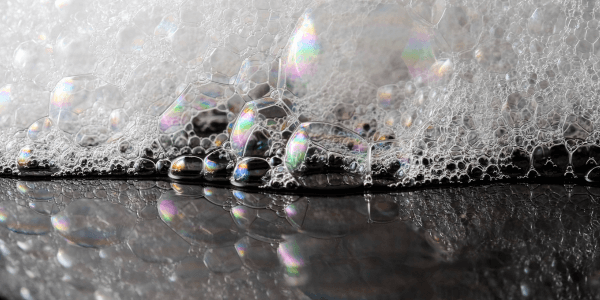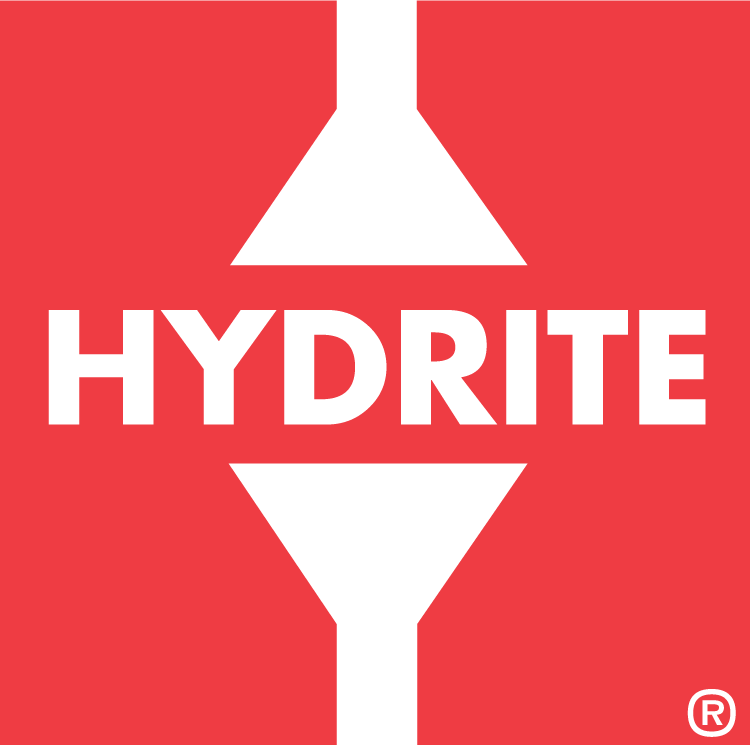Custom Solutions
Water-Based Ink and Coating Solutions
Hydrite is a full-service supplier of styrene/acrylic emulsion polymers and solutions for the water-based inks and coatings industry. Having Hydrite as your full-service supplier can offer several benefits. Hydrite offers a one-stop solution for all your needs, providing a single point of contact and reducing the complexity of procurement which simplifies communication and order processing. Our full line of defoamers, antifoams, and air release agents are designed to work in solvent-borne, water-reducible, water-based, and 100% active systems. Our products work in paint and coatings based on starting materials such as acrylics, alkyds, polyurethane, PVOH, SBR, and terpolymers.

Acrylics
Acrylic emulsions are commonly used as binders in water-based paints and coatings. They provide excellent adhesion, durability, and weather resistance. Defoamers help control foam formation during the manufacturing and application of acrylic-based coatings. Rheology modifiers or thickeners are used to adjust the viscosity of acrylic coatings for better application properties.
Alkyds
Alkyd coatings often require solvents for proper application and film formation. Common solvents include mineral spirits or other suitable thinners. Driers or drying agents may be added to accelerate the curing of alkyd coatings. Alkyd coatings are compatible with a wide range of pigments and fillers to achieve desired color and performance.
Polyurethane
Polyurethane coatings are typically formulated using isocyanates and polyols. These components react to form a durable polyurethane film. Catalysts may be used to control the curing rate of polyurethane coatings. Some formulations may include adhesion promoters to enhance the bond between the coating and the substrate.
PVOH
PVOH can be used as a binder in water-based formulations, providing film-forming properties. Plasticizers may be added to improve flexibility in PVOH-based coatings. Crosslinking agents can enhance the performance and durability of PVOH coatings.
SBR (Styrene Butadiene Rubber)
SBR latex is commonly used as a binder in water-based paints. It offers good adhesion and flexibility. Fillers may be added to SBR formulations to improve properties like hardness and abrasion resistance. Stabilizers help maintain the stability of SBR latex during storage and application.
Terpolymers
Terpolymers, being a combination of three different monomers, can offer a balance of properties. They may be used as binders in various coating formulations. Terpolymers can be modified with other additives to achieve specific performance characteristics. Crosslinking agents may be used to enhance the crosslink density and improve the overall performance of terpolymer-based coatings.
Hydrite Product Lines
Styrene/Acrylic Emulsion Polymers
Hydrite's HydriPrint™ and Hydricryl™ product lines offer a wide range of performance attributes to meet application requirements. When the performance and characteristics of materials are critical to your final product, Hydrite provides customization options to meet specific requirements and offers technical support and expertise to help you choose the right materials for your applications.

Defoamers, Antifoams & Air Release Agents
Hydrite's full line of defoamers, antifoamers, and air release agents are designed to work in solvent-borne, water-reducible, water-based, and 100% active systems to control foam and promote the release of entrained air.

Solvent-Based Systems
The main challenge in this system is often the incorporation of air during the mixing and application processes. Defoamers and antifoams in solvent-borne systems typically work by breaking surface tension. They reduce the surface tensions of liquid, preventing the information of stable foam bubbles. Defoamers can cause the coalescence of smaller bubbles into larger ones, which then collapse more easily. The choice of defoamer depends on the compatibility with the solvent and the formulation, ensuring it does not negatively impact the coating's properties.
Water-Reducible Systems
In water-reducible systems, including those with waterborne coatings, managing foam is crucial. Defoamers and antifoams function by surface modification. They modify the surface properties of the liquid, preventing the stabilization of foam. Some defoamers may coat the particles in the system, preventing them from acting as nucleation sites for foam. Water-reducible systems often require defoamers that are hydrophobic and can effectively work in an aqueous environment without negatively affecting the coating's performance.
Water-Based Systems
In fully water-based systems, managing foam is a critical challenge. Defoamers and antifoamers operate through deaeration. They aid in the release of entrained air by promoting the coalescence of air bubbles and facilitating their rise to the surface. Defoamers may interact with particles in the formulation, preventing them from participating in foam stabilization. The choice of defoamer in water-based systems is influenced by factors such as pH, compatibility with other additives, and the overall formulation.
100% Active Systems
These systems could be solvent-based or water-based, making managing foam an important process during manufacturing. Defoamers and antifoams in these systems work through bubble coalescence. They encourage the merging of small bubbles into larger ones, making it easier for them to rise to the surface. Facilitating the release of entrained air during the manufacturing process. The choice of a defoamer depends on the specific requirements of the process and the compatibility with other components in the system.
Considerations
Results May Vary
It is important to note that these are general guidelines, and specific formulations may vary based on the desired properties of the final coating, the substrate, and the intended application. Formulators often consider factors such as adhesion, durability, weather resistance, and environmental impact when selecting products for a particular coating system. Defoamers need to be compatible with the overall formulation and other additives present.
Use Correct Dosage
The use of defoamers should not negatively impact the performance and properties of the final product. The optimal dosage of defoamers depends on the system and the severity of foam-related issues. It is important to note that the effectiveness of defoamers can vary on the specific formulation and application process. Contact us to speak with one of our knowledgeable representatives to find the most suitable defoaming solution for your application.

Contact Us
Learn more about Hydrite's custom solutions in the paint ink and coatings industry.
